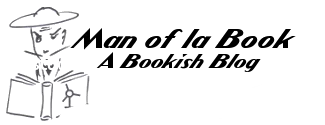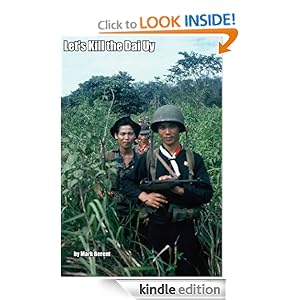Please note: The prices for the post are current at the time of the post, please pay attention to make sure they haven’t changed before purchase.
Authors: If you’d like your book to be featured on Tightwad Tuesdays pleaseemail me.
A Medical Emergency, Major-General ‘Ginger’ Burston and the Army Medical Service in World War II
by Ian Howie-Willis
Australian soldiers and their American Allies won the land war against Japan in the Pacific islands because they were healthier than their enemies. The troops’ fighting spirit, their armaments, their naval and air support and their generals were certainly key ingredients in the Allied victory. Without good health, however, these other factors would have been nullified.
Malaria, the great scourge of armies throughout history, threatened the health of the Allies and the Japanese alike. The army that could beat malaria would also defeat its military foe because troops shivering, sweating and shaking with malarial fever cannot shoot straight, let alone fight.
In World War II the Allies eventually beat the Japanese — a victory based, to a large part, on the success of the Australian Army Medical Service in defeating malaria. Their Japanese counterpart never won this battle.
Major-General ‘Ginger’ Burston led the Army Medical Service throughout the Pacific campaigns. This pivotal book explains how Burston and his medical team kept Allied troops healthy in primitive and hostile conditions and during the greatest medical emergency of World War II — the struggle against malaria.
By keeping the soldiers healthy, and particularly by reducing malaria infection rates from 100 to less than one case per 1000 troops per week, the Army Medical Service assured an Allied victory over Japan. A Medical Emergency tells this remarkable story for the first time. In engrossing detail and using contemporary accounts, veteran historian Ian Howie-Willis brings to life the struggle of ‘Ginger’ Burston and his Medical Service to fight a deadly opponent that decimated the ranks of friend and foe alike. Their victory was key to the ultimate Allied success.
The Story Of The Irish Civil War (The Story Of Series)
by John Dorney
Unlike the Easter rising in 1916 and the Irish War of Independence from 1919-1921, the Irish Civil War tends to get little attention from either readers or students of Irish history. Yet even now, the rival parties in the conflict continue to form the basis for two of the largest parties in the state and much of the bitterness from the war divided opinion and politics of the new Irish state for much of the twentieth century.
A war that was lacking in set piece battles, it nonetheless featured vicious urban fighting, prolonged field activities at Kilmallock and an extended guerrilla campaign in the later stages, not to mention innovative amphibious assaults by the young Free State government.
In this short informative and lively account of the origins, course and aftermath of the civil war, John Dorney brings the reality and brutality of the war to life for readers.
Bully Beef and Balderdash Some Myths of the AIF Examined and Debunked
By Graham Wilson
Was Beersheba the last great cavalry charge in history? Did the AIF storm the red light district of Cairo and burn it to the ground while fighting running battles with the military police? Was the AIF the only all-volunteer army of World War I? Graham Wilson’s Bully Beef and Balderdash shines a critical light on these and other well-known myths of the AIF in World War I, arguing that these spectacular legends simply serve to diminish the hard-won reputation of the AIF as a fighting force.
Wilson asserts that the story of the AIF is extraordinary in its own right, its fighting record so well established that there has never been a need to embellish that story. However, as Bully Beef demonstrates, the history of the AIF has become so shrouded in misinformation that what is now generally accepted as ‘history’ is often little more than myth and legend.
Did the men of the Light Horse shoot their horses rather than see them sold off to the hated ‘Gippos’? Was Alfred Gaby VC’s eerie studio portrait actually taken after his death? Did the AIF fight the war on an unrelieved diet of bully beef and
biscuits? Wilson painstakingly examines a number of myths associated with the AIF, some cherished and well seasoned others obscure and even whimsical.With meticulous, at times forensic analysis, he sets out to debunk these myths,
using a range of first-hand accounts and official records to unravel the facts and set the historical record straight. Were Catholics in the AIF denied the VC because of their religion? Was Gallipoli an intelligence failure?Graham Wilson mounts his own campaign to rehabilitate the historical reputation of the force free from hyperbole and jingoism to demonstrate that misleading and inaccurate embellishment does nothing but hide the true story of
Australia’s World War I fighting army.Bully Beef and Balderdash deliberately targets some revered legends and, for those who cherish the mythical story of the AIF, this will be uncomfortable but essential reading. Yet, given the extraordinary truth of the AIF’s history, it is
certainly compelling reading.
Let’s Kill the Dai Uy
By Mark Berent
This is a hilarious tale of an Air Force combat fighter pilot in Vietnam who goes out on patrol with a special forces team he has supported many times from the air. Seeing the pilot is having a hard time keeping up, one of the Chinese mercenaries called Nungs, says to the team leader, “Let’s kill the Dai Uy.”
Dai Uy is Vietnamese for captain.
Read on to see what happened.
Zohar – Man of la Book





No Comments